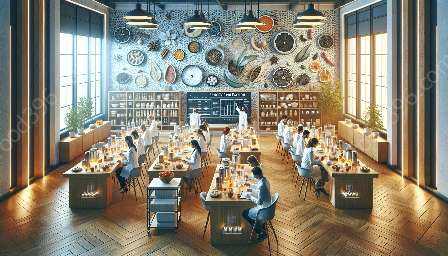When it comes to understanding food perception and quality, sensory evaluation techniques play a crucial role in the field of culinology. In this comprehensive guide, we will delve into the various methods, importance, and applications of sensory evaluation, shedding light on this fascinating aspect of the culinary world.
Understanding Sensory Evaluation
Sensory evaluation is a scientific approach used to assess and measure the characteristics of food products through the human senses, including sight, smell, taste, touch, and hearing. This method provides valuable insights into consumer preferences, product quality, and the overall sensory experience of food.
The Importance of Sensory Evaluation
For chefs, food scientists, and culinary professionals, understanding sensory evaluation techniques is essential for creating and refining recipes, developing new food products, and ensuring consistent quality and flavor profiles. By utilizing sensory evaluation, professionals can gain a deeper understanding of how consumers perceive food, leading to improved product development and consumer satisfaction.
Types of Sensory Evaluation
There are various types of sensory evaluation techniques, each serving a specific purpose in the culinary and food industry:
- Descriptive Analysis: This method focuses on identifying and quantifying the sensory attributes of food products, providing a detailed profile of flavors, textures, and aromas.
- Preference Testing: Preference tests involve presenting consumers with different food options to evaluate their preferences, helping to determine which products are favored by the target audience.
- Difference Testing: This method is used to detect differences in sensory characteristics between food samples, determining whether a change in ingredients or processing methods impacts the sensory attributes of a product.
Sensory Evaluation Techniques in Culinology
Culinology, the blending of culinary arts and food science, heavily relies on sensory evaluation techniques to create innovative and palatable food products. By harnessing sensory evaluation, culinologists can refine recipes, optimize flavor profiles, and develop sensory experiences that resonate with consumers.
Applications of Sensory Evaluation
The applications of sensory evaluation techniques span across various sectors of the food industry, including:
- New Product Development: Sensory evaluation helps in the creation of new food products by understanding consumer preferences and optimizing sensory attributes.
- Quality Control: In food production, sensory evaluation is used to ensure consistent quality in products, identifying any deviations in sensory characteristics.
- Consumer Research: By conducting sensory evaluations, food companies can gather valuable insights into consumer preferences, leading to informed decisions about product positioning and marketing strategies.
The Future of Sensory Evaluation
As technology continues to advance, the future of sensory evaluation is evolving with innovative tools and methodologies. From digital sensory analysis platforms to virtual reality simulations, the integration of technology is reshaping how sensory evaluation is conducted, offering new opportunities for understanding and enhancing the sensory aspects of food.
In conclusion,
sensory evaluation techniques are an integral part of the culinary and food science landscape, providing invaluable insights into the sensory attributes and perceptions of food products. By embracing and mastering these techniques, professionals in the field of culinology can elevate the quality, appeal, and consumer acceptance of their creations, ultimately shaping the future of the food industry.


